#fanfic resource
Text
Some notes on the aristocracy in Sweden
I’ve decided to collect some of my research into the Swedish aristocracy into a post in case some of it could be of interest to other fanfic writers - or any other YR fans who want to learn or remind themselves how nobility works in Sweden.
I’ll start with some background info, move on to the current situation (with examples from YR), and finish with a couple of observations on names and emblems.
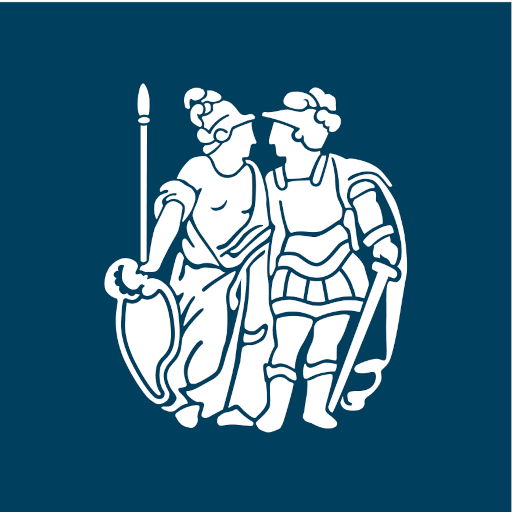
As always, any corrections and additions are much appreciated! I am sadly not Swedish myself, but my country was until 1809.
Some sources: Riddarhuset (logo pictured above), Ointroducerad Adels Förening and Ritarihuone, column by nobleman/author Niklas Natt och Dag, various history websites (e.g. this one and this one), Wikipedia (e.g. list of noble families and uradel), Svenska Dagbladet (e.g. book review and recent article), Adelsvapen Wiki, article on Scanian nobility getting EU subsidies and article on billionaires, history lessons in school, visits to historical sites, etc.
Relevant concepts & history
Adeln / the nobility: People belonging to the aristocracy i.e. the highest social class in a country.
In Sweden, there are two kinds of nobility: titled and untitled. I’d say the closest English equivalent is the difference between (titled) nobility and landed gentry. The latter aren’t considered noble as such under the English system but are basically the same as untitled nobility under the Swedish system.
The titles are greve & grevinna (count & countess) and friherre & friherrinna (baron & baroness); count is higher than baron. A handful of naturalised families of also bear foreign titles.
Hertig & hertiginna (duke & duchess) are reserved for the Royal House and are the only titles the monarch is allowed to grant today. (In the show, only Wille and Erik are close enough to the Crown to be dukes.)
Untitled nobility used to have different ranks, but they don’t anymore. Initially, they came from humbler/more recently elevated origins than titled families (e.g. knights, high-ranking public servants, successful bourgeoisie) or were otherwise less powerful, but this distinction disappeared in the early 1700s.
Most noble families go back to the 1700s or further. From 1865, ennoblement was reserved for special conditions, and no new families have been ennobled since 1902. The monarch lost this power entirely in 1974 (with the exception of the ducal titles).
Frälse: A term used in the Middle Ages to refer to the privileged classes. The non-clerical frälse became adel in the 1500s/1600s.
Frälse referred to exemption from tax and was granted in exchange for supplying fully equipped horsemen for the king’s army. It also included other privileges, e.g. eligibility for the highest public offices.
From 1420 on, frälse became hereditary. Families whose forebears were frälse before this change are known as uradel. One of them is Horn.
In the 1500s to 1600s, the requirements changed. The new adel were just ennobled by the grace of the king.
In the late 1600s, the Crown took back some of the land given to the nobility. This sped up their transition into an elite class of public servants, as some old families lost power and new ones rose up.
(Riks)stånd / estate (of the realm): One of the classes under the social hierarchy and political system that existed in Europe from the Middle Ages on.
There were four estates in Sweden: clergy, nobility, burghers/bourgeoisie (urban merchants), and peasants (only a small portion of the entire peasantry). The clergy and nobility held the most power at the ståndsriksdag (diet of the estates).
The nobility gained more power again in the early 1700s when the monarchy was weak, but the tables turned towards the end of the century. The monarchy grew stronger again and the noble houses’ privileges started to be stripped away.
By the time the estate system was abolished in 1866, the bourgeoisie had gained a lot more power (largely thanks to the industrial revolution).
Riddarhuset / House of Nobility: An organisation of noble families, established in 1626.
Under the estate system, a family had to be introduced into the House of Nobility to participate in politics. Some unintroduced noble families still exist, most of them of foreign origin.
Today, Riddarhuset is just an association that upholds traditions, grants scholarships, catalogues the families in Adelskalendern (the Swedish Peerage Book), etc.
Every three years, the heads of the families (oldest living men) gather to make decisions at adelsmötet, the Assembly of Nobles.

That feels like a fitting segue to the current situation.
Some current statistics
The aristocracy only make up 0.2% of Sweden’s population today.
There are about 28,000 introduced nobles belonging to 657 houses, plus about 450 unintroduced nobles belonging to 100 houses, alive today.
Out of the 657 introduced houses, 480 are untitled, 131 are baronial, and 46 are comital houses.
Approximately 50% of introduced nobles live in Stockholm and the surrounding region, 25% elsewhere in Sweden, and 25% abroad.
The overwhelming majority of nobles aren’t rich or powerful. The ones who are may be disproportionately rich and powerful, and even the ones who aren’t may still benefit from their ancestry.
Out of the 542 billionaires in Sweden, 32 are noble (6%). Their fortune is usually inherited, and many of them belong to the most influential families in Sweden.
The aristocracy are also major landowners. The days of them owning up to 40% of all land are long gone, but they still own roughly 400,000 hectares / 4,000 sqkm / 1,544 sqm south of the Dal River. Especially in Skåne/Scania, where their holdings amount to 46% of farmland. Scanian nobles are the biggest recipients of agricultural subsidies in the EU.
Nobles are also overrepresented in high-paying jobs and related fields of study, as well as elite schools (e.g. the ones Hillerska is based on).
Rules on who counts as noble
[Apologies for the binary language that cannot be avoided.]
Only noble-born men can pass their rank on, and only to their wedded spouse and biological children by said spouse. This rule is based on centuries-old orders, but the Assembly of Nobles has the power to change it. They simply don’t want to, so...
A nobleman’s spouse becomes noble, regardless of sex. They retain their rank after divorce/in widowhood but lose it upon remarriage.
If one of the Society boys - say, Henry - married a man, his husband would become noble. If they got divorced, the ex-husband couldn’t pass it on to his children.
August’s mother Louise was very likely a countess or baroness while married to Carl Johan, as most of the Horn family branches have been titled. Marrying Rickard will have cost her the title.
Noble-born children remain noble for life (nobility can’t be renounced). Women cannot pass it on, and men can only pass it on according to the rules.
Felice can only be noble if Poppe is.
Felice is noble for life, but her children won’t be, unless she marries into another noble house. If House Ehrencrona has no male descendants, it will become ‘extinct’ in the male line, whether or not Felice’s children have her last name.
Biological children can be ‘legitimised’ after birth. If August discovered that he had a son and the mother agreed to marry him, the son would become his noble heir.
Adoptive children cannot be ‘legitimised’ at all. If Vincent and his future wife decided to adopt a son and had a biological daughter later on, only the daughter would be considered noble.
The exclusion of children by anyone other than a wedded spouse means that Henry and his husband could not have a ‘legitimate’ heir even by going abroad for surrogacy.
So, by swearing to prevent the extinction of their noble families, the Society boys are actually swearing to marry a woman and have babies with her. Preferably male babies.

Firstborn sons
The emphasis on firstborn sons is more of a tradition than a rule today. The firstborn will become the head of the family and has historically been the one whose responsibility it is to continue the bloodline, but in most families, all children are considered noble. In fact, a count’s sons are all counts and his daughters are all countesses, even while their father is still alive! And when the time comes, all the children inherit their share of the family estate (with wills etc. taken into account).
However, there are two notable exceptions.
Families ennobled after 1809 are subject to male-only primogeniture. Inheritance works the same as in any other family, but only the head of the family is considered noble.
Around 15 landed estates are still subject to fideicommissum - an ancient legal instrument that allows the firstborn to inherit the entire estate. In the old days, these were very common. They were set to expire from 1964 on, but families could petition for an extension, with each generation arguing that their estate had particular cultural-historical value and should be kept intact. New petitions are being denied now; the number was still 25 in 2019.
So if most noble families don’t fall into either of the above categories and don’t even have any special privileges anymore, what does any of this matter?
Well, it matters to them.
Value of nobility today

Many aristocrats are very proud of their noble roots and want to pass those on. They have their own networks and clubs; e.g. Ridderskapet och Adelns Ungdomsklubb (RAUK) for 18-35-yo members of introduced noble families. The photo above is from their summer ball in 2016.
The quote by a young (presumably queer) countess interviewed in one of the SvD articles above is quite illustrative. Nobility doesn’t matter when she dates women since they can’t pass it on anyway, and lack of nobility is not a dealbreaker even when she dates men. But it is definitely a selling point if her kids could grow up noble and inherit their dad’s title.
The two noblemen interviewed in the same article are indifferent to the matter of passing it on, and one of them even says he can’t be proud of an ancestry that exploited those under them. However, it’s worth noting that these guys are outliers for talking to the reporter at all. The many land-owning nobles who refused, e.g. the guy who jokingly said “we’re doing well here at the top”, might see it differently. In general, it’s hard to get the elite to talk about their privileges - this was also described in Agnes Hellström’s book Att vara utan att synas about the real boarding schools, which I’ve posted about before.
Anyway, nobility also matters to the rest of the upper classes. The pecking order among those who all have ridiculous amounts of wealth isn’t just based on who has the most money. What matters is how long they’ve been able to retain their wealth, what else they have besides just money, and crucially, how much social capital they’ve amassed as part of the elite.
So-called upstarts who only just made their money lack connections, are ‘out of the loop,’ and don’t know the social codes necessary to fit in. A typical example is that the nouveau riche may be eager to show off their newly improved lot in life, while the established elite strive to act humble about it.
This disdain for new money is demonstrated in YR by August’s look when he introduces Alexander as “son of Ulf Bragé, owner of Bragé Investments” - and of course the way Rickard sticks out like a sore thumb at Parents’ Day. He shows up in a flashy car and expects valet service, unlike the alumni who parked their own expensive but nondescript cars, and he’s also very ungraceful at the table when Wille snubs August.
As seen in the show, information in the form of gossip and rumours, as well as connections in the form of who knows whom, are essential.
Old families haven’t just sat on their money, they’ve invested it in their estates and things like works of art over the centuries. Those are so valuable precisely because they aren’t strictly ‘necessary’ - it’s not real wealth if you have to keep it all at hand. It is considered an enormous shame to have to sell up, as seen with Årnäs in the show.
So maybe it does make sense after all. The nobility have been ‘in the loop’ since way before the bourgeoisie became a thing, and they are such an exclusive lot that the only way to join their ranks is by birth or marriage. That’s the kind of social capital that money can’t buy - directly, that is. Historically, nobles who fell on hard times often found a spouse among the rich bourgeoisie, trading some of their prestige for an economic lifeline.
Speaking of joining their ranks, I want to conclude this with a quick look at two emblems/markers of nobility, so to speak.
Noble names and coats of arms
There are a few different types of noble family names in Sweden, the most prevalent being compound names made up of two words. To distinguish from regular Swedish surnames, noble names often have rather lofty or unusual meanings. For example:
Gyllen - golden, Silfver - silver, Adel/Edel - noble, Ehren - honour/glory, Lejon/Leijon/Löwen - lion, Gripen - griffin, Adler - eagle, Oxen - ox, Lager - laurel, Ceder - cedar...
...stierna - star, crona/krona - crown, svärd - sword, sköld/skiöld - shield, hielm - helm, crantz - wreath, stråle - ray of light, etc.
These can also be combined with more commonly used parts: felt, gren, etc. Some of them may be in a longer, older form: Linden- instead of Lind-, Rosen- instead of Ros-, and so on.
Not all names made up of these parts are noble names! They can also be names that only survive in the female line, or names made up by people who maybe liked the sound of noble names. Furthermore, these are not the only type of noble names out there. A few examples from the long list on Wikipedia, which includes extinct names:
Very simple names: Horn, Grip, Sparre, Creutz, Uggla, etc. These are usually old names with meanings that were easy to paint on a shield.
Non-Swedish names: Walkendorff, Breitholz, Nauckhoff, De la Grange, Duwall, etc. Many of these belong to families who immigrated centuries ago, predominantly from Denmark, present-day Baltics, or present-day Germany.
Names that include a place of origin (town, region or estate): De Geer, von Hofsten, Svinhufvud i Västergötland, Wachtmeister af Johannishus, Hamilton af Hageby, Munck af Fulkila, etc. Or indeed names made to sound like this, such as von Essen.
Names composed of the preposition ‘af’ and the original family name, to signal that they are descended from someone: af Huss, af Sandeberg, etc.
Branches of the same family, distinguished by their estate names: Horn af Åminne, Horn af Kanckas, etc. I guess we can add Horn af Årnäs to the list for YR.
And so on. If you need a noble name for a character, you can look at the list for inspiration - or even just use an existing name. This is what the writers have done in YR with both Felice and August.
Ehrencrona used to be a real name: untitled family number 879, ennobled in 1675 and extinct in 1917. Another branch of the same family was ennobled under the name Ehrenkrona in the same year, as baronial family number 210, and that one is still alive today. Here are their coats of arms - untitled Ehrencrona on the left and baronial Ehrenkrona on the right.
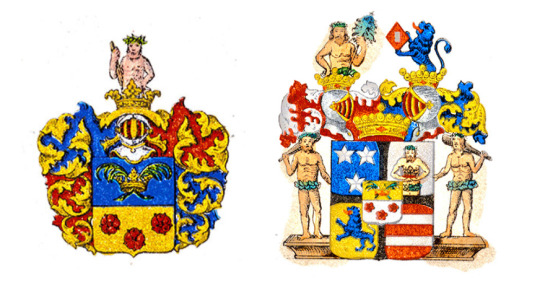
Each family has a coat of arms, and a number in the House of Nobility. The first 100 numbers were drawn at random, the rest are chronological.
Noblemen often bear their coat of arms on a signet ring, like the one we see August wear in the show (the ring can also just be engraved with their monogram, or perhaps a combination of both). In fact, Chrille/Krille wears one too, if you look closely at the Society party scene! Here’s a screenshot of August’s:

The show may not be allowed to use the real heraldic imagery for legal reasons. Most of the branches of the Horn family are extinct, but the main branch, the comital family Horn af Åminne, is still alive. YR can probably get away with inventing a new branch as long as they don’t make the connection to the real family too obvious.
If the coat of arms was accurate, it should include a variation of the typical horn (left) and various things around it, similar to the Horn af Åminne coat of arms (right). I don’t know anything about heraldry, but titled houses often have a whole lot of stuff going on there, symbolising their history and position.
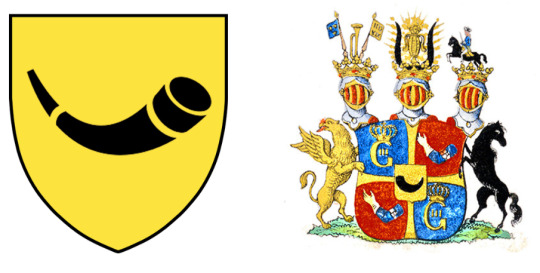
An interesting detail about the signet rings is that in the article mentioned above, one of the men is described as wearing his ring all through their interview, but hiding it when it’s time to take photos. He says “it’s one thing to wear it privately and another thing to show it in a newspaper,” even though he uses it to sign his books sometimes. Which fascinates me - he’s the same guy who said he wasn’t proud of his ancestry and even wrote the somewhat satirical column on nobility linked above, but I guess the signet ring still isn’t just any old trinket to him.
So, that’s it! Thank you for reading all this way! As I said at the start, any additions and corrections are most welcome.
#young royals#young royals meta#swedish nobility#swedish aristocracy#fic writing#fic research#fanfic resource
96 notes
·
View notes
Text

Hello Argylle fandom!
Here's a quick catalog of things that I thought might be useful for other fic writers!
Elly's drink is called a "Whisker Sour" (lol) and is a play on a Whiskey Sour (recipe here). It's served in a tumbler or Old Fashioned Glass with an argyle/hatch/diamond etched pattern. (hi-res photo above from Apple)
The Argylle book cover colors in the hardback set are:
Argylle I - yellow
Argylle II - red
Argylle III - blue
Argylle IV - purple (the one Elly reads from at the signing and that Aiden is reading on the train)



The first paragraph of the author's biography reads: "ELLY CONWAY is the author of the bestselling Argylle series of books, which have sold over 250 million copies worldwide, been published in more than 200 territories and been translated into 73 languages."
Penguin Random House does have a biography page for her, which simply reads: "Elly Conway was born and raised in upstate New York. She wrote her first novel about Agent Argylle while working as a waitress in a late-night diner." They did come out with an actual book of Argylle that can be purchased, and the dedication and author's notes are particularly interesting to see in light of the movie's plot.

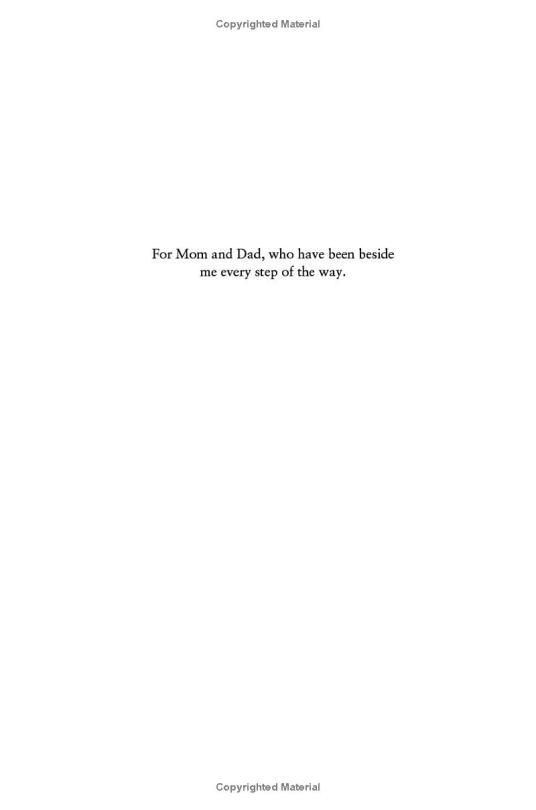
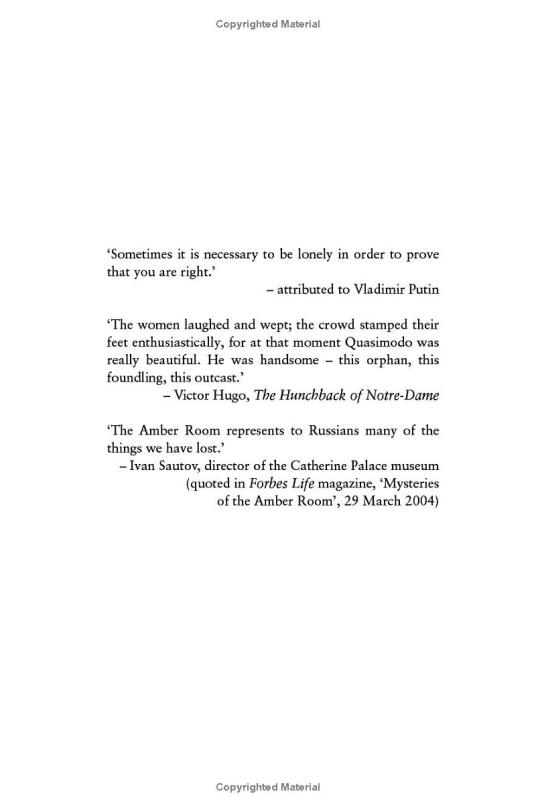
Hope this was helpful, and since it's for fanfic, feel free to use or ignore at your discretion! Please let me know if there's anything else you'd like to see or know. Thanks!
Photo sources (x, x, x, x)
#argylle#elly conway#aubrey argylle#sam rockwell#bryce dallas howard#matthew vaughn#argylle movie#fanfiction#fanfic resource#aiden wilde#elly x aiden#argylle fanfiction#henry cavill
16 notes
·
View notes
Text
I'm not sure if any fanfic writers or fanartists for Death Stranding are interested in that level of adherence to the game, but here are the presumably canon suit colors for Corpse Disposal Team, Bridges medics, Bridges security team, Bridges engineers, independent porters, MULEs, terrorists, Fragile Express porters, and uhh, not sure what's the last one (BB technicians?)














If you'd like specific info on what MULE color is worn in what area, lmk I can go check ¯\_(ツ)_/¯ I'm just chillin
15 notes
·
View notes
Text
Apparently you can't find a good list of which Class 1-A students ended up where during the USJ arc on the wiki so here are the fruits of my tired labor even though it's not that late yet and it wasn't too hard, just annoying. Please excuse any errors in names or anything, I am very done with life.
USJ Arc: Where Class 1-A was teleported
Entrance (not teleported): Ashido Mina, Sato Rikido, Shoji Mezo, Sero Hanta, Iida Tenya, Uraraka Ochaco
Ruins Zone: Kirishima Eijiro, Bakugo Katsuki
Landslide Zone: Todoroki Shoto, Hagakure Toru
Mountain Zone: Kaminari Denki, Yaoyorozu Momo, Jiro Kyoka
Conflagration Zone: Ojiro Mashirao
Flood Zone: Midoriya Izuku, Asui Tsuyu, Mineta Minoru
Downpour Zone: Koda Koji, Tokoyami Fumikage
Unknown: Aoyama Yuga
#my hero academia#boku no hero academia#anime#fandom#fandom wiki#wiki#manga#mha#bnha#fanfiction#fanfic#writer#writer problems#writeblr#writing#writing resources#fanfic resource#im tired#damn ojiro was just fine on his own in the fire#aoyama where the fuck were you#its been a while since ive watched this#im so behind#no spoilers plz#class 1a#yes this does indeed mean i am working on fractured#if you know you know
6 notes
·
View notes
Text
NEW VIDEO! Which POV is Right for your Fanfiction? Part 2: First and Second-Person POV
youtube
Hello and welcome back to the POV duology! Just in case you've missed it in the title, this video is Part 2 of a duology about point-of-view. If you're looking for a definition, or just want to know about the three types of third-person POV, then check out my last video!
👉 • Which POV is Righ...
If you've seen it and feeling ready to launch into the ever-controversial first and second POV styles, then watch on, dear viewer. Watch on.
FIRST-PERSON RESOURCE https://www.masterclass.com/articles/...
SECOND-PERSON RESOURCE https://www.masterclass.com/articles/...
#Youtube#how to write fanfic#how to write fanfiction#fanfic writing advice#first person#second person#first-person pov#second-person pov#self insert#reader insert#just fanfic things#just fanfiction things#fanfic writing#fanfic advice#fanfic resources#fanfiction resources#fanfic resource#fanfiction resource#cora's youtube videos
4 notes
·
View notes
Text
What's this? A BG3 article on a gaming journalism website that isn't just a summary of yesterday's Reddit posts? Unpossible!
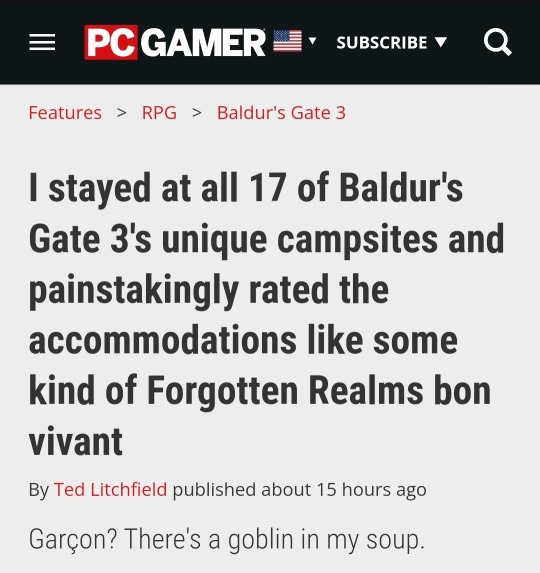
PC Gamer: I stayed at all 17 of Baldur's Gate 3's unique campsites and painstakingly rated the accommodations like some kind of Forgotten Realms bon vivant by Ted Litchfield
Would have been funnier if written in the style of Harrington Nethalin, but still a nice little resource for BG3 fanfic authors.
4K notes
·
View notes
Text
Showing versus Telling
I struggle a lot with "showing and not telling." Here's some exercises and techniques I've tried to practice this from researching different methods that I just conjured up together (please take with a grain of salt, everyone is different, lol.):
Object Observation: Choose an object in your immediate vicinity and describe it without naming what it is. Include details about its texture, color, size, shape, and any other distinctive features. Basically: have someone else to identify it based on your description.
Character Emotions: Write a list of emotions and for each one, write a short scene that shows a character experiencing that emotion without directly stating what the emotion is. i.e., Instead of saying, "Alistair was angry", you could say... "Alistair's fists clenched, his jaw tightened; his face turned red as he stared at the broken amulet on the floor."
Active Verbs: Challenge yourself to rewrite sentences using more active, specific verbs. i.e., "She walked into the room" (telling) could become, "She strutted into the room, her boot heels clicking against the marble floor" (showing).
Sensory Details: Choose a setting, real or fictional, and describe it using all five senses. What can a character see, smell, hear, taste, and touch in this environment, or moment?
Dialogue: Use dialogue to reveal information about your characters and the plot. Instead of telling the reader that a character is upset, show it through what the character says and how they say it.
In-Depth Character Description: Take a character from your story and describe them in detail. Show their personality through their actions, speech, and appearance, rather than direct statements.
Rewrite Telling Sentences: Take a piece of your own writing or a passage from a book and identify the "telling" sentences. Rewrite them in a way that "shows" instead.
Hope this helps! ✍(◔◡◔)
#writing#creative writing#writing tips#writing advice#writing help#writing resources#writing tips and tricks#on writing#writers#ao3 writer#ao3 fanfic#archive of our own#fanfic
3K notes
·
View notes
Text
Noah Schnapp couldn't even say Palestine. He said "that region". Keep boycotting
#noah schnapp#not fanfic#palestine genocide#from the river to the sea palestine will be free#free palastine#palestine news#palestine#palestine resources#israel#free gaza#free palestine#hamas#genocide#current events#gaza#palestine will be free#palestine will never die#gaza strip#gaza under attack#gaza news#gaza genocide#gazaunderattack#israhell#fuck israel#israel is a terrorist state#israel is committing genocide#isreal#fuck noah schnapp#fuck you israel#stop israel
638 notes
·
View notes
Text

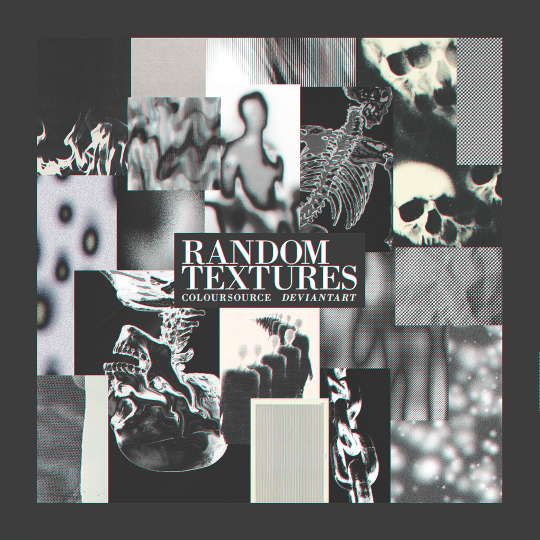
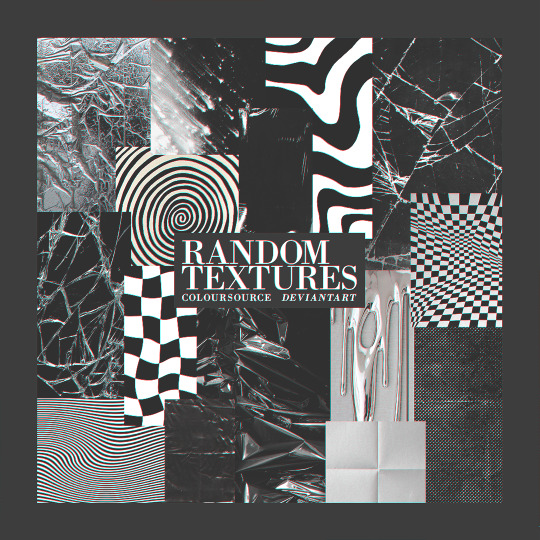
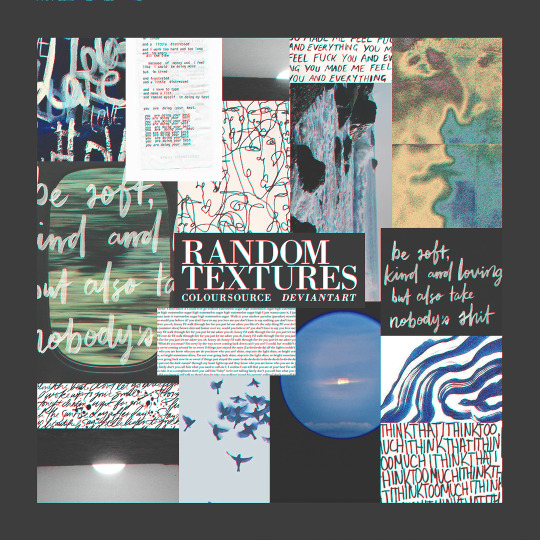
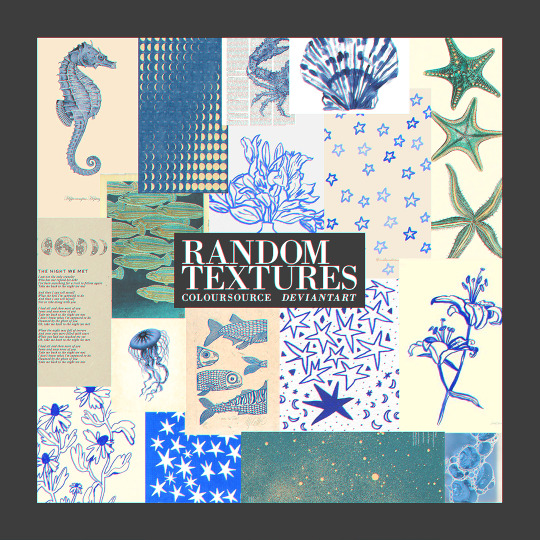

— RANDOM TEXTURES
ENG.RULES: a. add to favorites and comment (please be kind) if you download; b. please contact us in case of errors/failures in the download; c. don't including in other packs or transfers. PT.REGRAS: a. adicione aos favoritos e comente (seja gentil) se baixar; b. entre em contato no caso de erros/falhas no download; c. não inclua em outros packs ou repasse — download ↺
#psd#psd coloring#effect#moodboards#aesthetic#kpop#png#collage#capas#capa de fanfic#free#resources#photoshop#photopea#pack#packs#coloursource#brushes#actions#moodboard#icons
386 notes
·
View notes
Text
We ask your questions so you don’t have to! Submit your questions to have them posted anonymously as polls.
#polls#incognito polls#anonymous#tumblr polls#tumblr users#questions#polls about the internet#submitted dec 1#polls about interests#internet archive#internet#web resources#fanfiction#fanfic
299 notes
·
View notes
Text
In Defense of Fanfiction (Or the perfect starting point for your original novel)
Fanfic gets a bad rap pretty much everywhere except Tumblr. It’s misunderstood and misrepresented by its average works, seen as juvenile and cringey, or a banal point of contention between a famous person or piece of media and its fans.
Outside of fanfic that writes about real people, especially smut fics of real people, I support the art wholeheartedly. Fictional characters are one thing, but personally, caricaturing a celebrity’s life for public consumption and writing or drawing them in compromising content without their consent is a little weird. You do you. Don’t like, don’t read, as they say.
Fanfic is the perfect starting point for a few reasons:
It places you in a creative box and forces you to work within those constraints
It does all the worldbuilding and character concepts for you
It lets you write way outside your comfort zone
When published and receiving feedback, it boosts your self-confidence
It's incredibly flexible
It’s practice. All practice is good practice
—
Behold your creative box
When I was little I had no idea the majority of fanfic was shipping fics. I always pictured and looked for canon-divergent alternate universes. Like, what if X happened in this episode instead of Y? What if this character never died?
Fanfic demands you work within someone else’s canon, whether it’s an OC in the canonical world, or the canonical characters in an AU. These are like little bowling bumpers saving you from the gutter, but also keeping you on a straight-ish path toward the pins.
The indecisiveness of too many choices can be too intimidating when you’re first starting out. You want to be a writer but you have no idea where to begin, what genre to pick, what characters you want to chronicle, what themes you want to explore.
Even if it sits on your computer never to see the light of day, you still got those creative juices flowing.
Pre-packaged worldbuilding
Sometimes all we want is to get to the good stuff. Maybe I want to write a story about elemental magicians but Last Airbender already exists and I just want to play in a pre-existing sandbox. So I write some OCs into that world and have a free-for-all.
I don’t have to come up with my own lore, world history, magic system rules and mechanics, politics, geography—any of it. I get to just focus on the characters.
Even if you’re writing an AU, like say a coffee shop AU, you don’t have to think about brand new characters, you can just think “What would M do?” and go from there. The trade-off is your readers will expect canonical characters to behave in-character, but I think it’s worth it.
Stretch beyond your comfort zone!
Do you hate writing action scenes? Go practice with a shonen anime fic. Need work on dialogue? Write some high-fantasy fic, or a courtroom drama. Practice a fistfight by watching fistfights and writing what you see, and do it over and over again until what you read makes you feel like you're watching what’s on screen.
But beyond that—practice genres that you aren’t super familiar with. If you’re new to fantasy, write fantasy fic. Or a mystery novel/show, thriller, comedy, satire, adventure, what have you. The nature of fanfic still gives you those “guardrails” and you can get some brutally honest feedback on how you’re doing.
And, of course, the realm of M-rated romance and smut fics. I haven’t because I think I would die of embarrassment if I tried and I never intend to include sex scenes in my works anyway, but if you do want to, use the internet as your test audience. Post it on a throwaway account if you’re nervous.
Build that self-confidence!
The fandoms I used to write for are super dead, so it’s insane how I still get email notifications that so-and-so liked my fic to this day. Comments are as elusive as ever, but random strangers on the internet telling me they liked my work is a magical reassurance that my writing isn’t actually awful.
Random strangers on the internet are, as we all know, beholden to no moral obligation to be kind to your little avatar face, or be kind to be polite. So a rando taking the time to like my work or even leave a positive comment can feel more honest than one of my friends telling me what they think I want to hear.
I tend to avoid the more present aspects of fandom like online communities, forums, social media, what have you, so I get a delayed and diluted aspect of any given fandom through completed works. Which means, in general, I get to avoid the worst and most toxic aspects of fandom and get to sift through positive feedback and critique.
Even if your fanfic isn’t written with stellar prose, it’s fanfic. We don’t expect Pulitzer-prize winning content. And if your work isn’t up to snuff, people are more likely to just ignore it than put you on blast (at least in my experience, I never got a bad comment or a “flame” in the old FFN days).
Fanfic doesn’t care about the rules of published literature
On the one hand, try not to practice bad habits, but with this point I mean that your layout, punctuation, formatting, paragraph styles, chapter length–all of it is beholden to no rules. I get as annoyed as the next reader with giant blocks of paragraphs, or the double-spacing between pages of single-sentence paragraphs, but if the story’s good enough I might ignore it.
There’s more than just straight narrative fics, though. People write “chat” fics, or long streams of text and group chat conversations. The scene breaks can come super rapidly–I’ve seen fics with a single sentence in between line breaks to show the passage of time. And without the polish of a traditionally published novel, I’ve never seen a purer distillation of author voice in any medium more than fanfic.
All practice is good practice
Even if it’s crack fiction, or a one-off one-shot, or something meant to be lighthearted and straightforward and free from complex worldbuilding and intricate plots. It really helps break writer’s block when you can shift gears and headspaces entirely and you can get relatively instant feedback to keep you motivated.
Beyond that, the “guardrails” help you stay consistent as far as character growth and personality if you struggle with designing rich characters.
The most recent fanfic I wrote was just a couple years ago, for a dead fandom I didn’t think would get any traffic whatsoever. It wasn’t my original works, but the feedback on that fic gave me the kick in the butt I needed to get back into writing more seriously.
—
In short, I support fanfic. I may not be proud of my earliest fics' prose now, but I am proud that they walked so I can now run.
#writing advice#writing resources#writing tips#writing tools#writing a book#writing#writeblr#fanfic#fanfiction#archive of our own#ao3#ffn
202 notes
·
View notes
Text
a resource page for all your clone related needs
some tips on how to unwhitewash the clones in your content: 1 2 3
a folder of literally, like, 100s of photos of tem for all your reference needs
avoid racist, ableist, & otherwise negative stereotypes when writing about wrecker: 1 2
types of clone troopers
trooper weapons
technical sw terms
every canon named clone up until 2020 (images and names only)
ever canon named clone up until 2021 (images, names, battalions, & jedi officers)
every canon named clone up until 2023 (names and battalions only, no images)
assorted clone lore: 1 2 3 4 5 6 7 8 9 10
reader inclusivity (has fic resources + poc moodboard images)
some links + videos about māori culture you might find useful if it's relevant to your works: 1 2
disability inclusivity
māori, mando'a, and huttese dictionaries
star wars and clone specific fic dividers: 1 2 3 4 5 6 7
some things to keep in mind as we're celebrating characters played by and modeled after a māori man:


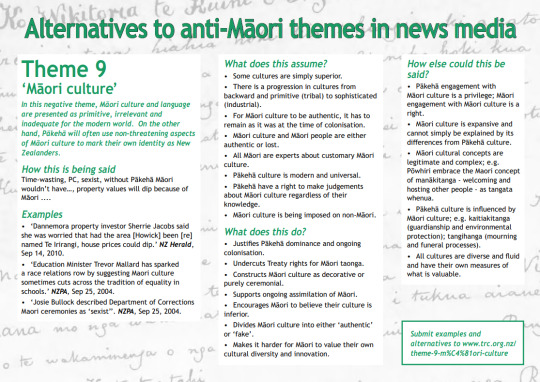
you can find the full pdf these are sourced from + more information on the subject here
if you're like me and you want to see some māori films that have māori cast members from the star wars universe, here's a list with free watch links where available:
tem's māori-focused films: once were warriors, what becomes of the broken hearted?, river queen, rain of the children, mahana/the patriarch (i'm also fond of a tv show he did called adventurer)
whale rider (keisha castle-hughes, aka queen apailana & emerie karr)
hunt for the wilderpeople (julian dennison, aka clone cadets deke & stak in tbb s3)
#event resources#2024cbe#star wars#star wars bingo#clone trooper bingo#clone trooper x reader#bad batch x reader#tbb#the bad batch#tbb fanfic#star wars fanfic
228 notes
·
View notes
Text
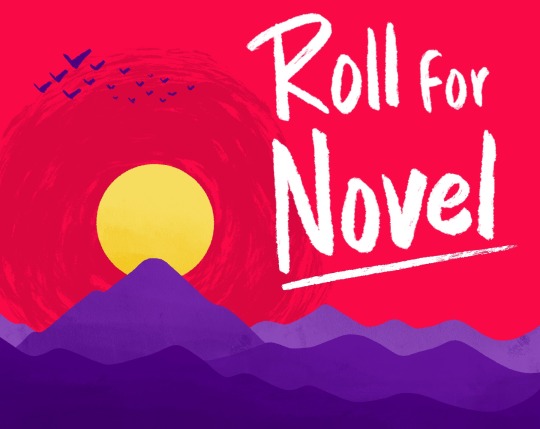
ROLL FOR NOVEL is a small game about generating story ideas! Over the course of a few dice rolls you will have a main character, a setting, a central plot, and more~


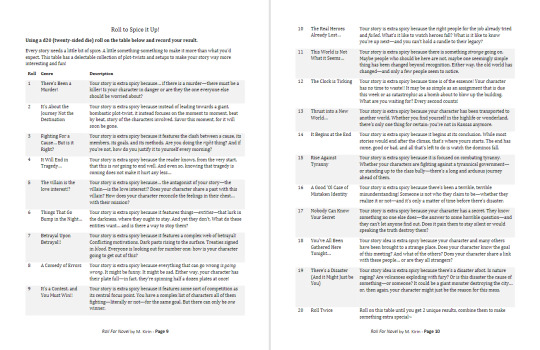

The book also includes a novel planning guide.
Oh and it's FREE 😉✨
Get it Now:
my shop ☕
itchio 🎮
drive-thru-rpg 🎲
#my books#my games#roll for novel#writing#amwriting#am writing#writing community#writeblr#story ideas#book ideas#character ideas#fanfic ideas#writing prompt#prompt#prompts#writing resources#free games#free to download#drive thru rpg#itchio#itch.io#ko-fi
721 notes
·
View notes
Text

Fanfic Writer Notion Template | Notion Template for Fanfiction Writers | Writing Notion Template | WIP Organizer Template
Hello! I'm very excited to finally share the Notion template I've created for fanfic writers!
Admittedly, I am more of a fanfiction reader than a fanfiction writer, but I wanted to try my hand at creating this Notion template. That being said, I'm not sure if I've organized the template in a way that is super helpful or makes sense for a writer, so any advice/suggestions you have would be greatly appreciated! I am definitely planning on revising the template - this is a very early iteration.
Feel free to contact me if you have any suggestions! :)
#fanfiction#fanfiction resources#fanfiction writers#notion#notion template#fanfiction writing#writing#writing resources#writing template#character wiki#character wiki template#fanfic writers#fanfic#ao3#fanfic organizer#notion workspace#notion dashboard#writer's dashboard#writer's life
286 notes
·
View notes
Text
What's another word for 'engorged'?
...and other smut writing resources.
Tired of using the same descriptors over and over?
Or, if you're like me, perhaps you're anxious that somebody is going to read your smut only to roll their eyes and say, "Ugh, can we please find another way to describe [body part and/or sex act]."

Well, say "Huzzah!" because here are some helpful (free) resources I found specifically for writing erotica and romance. I hope these help you write the smutty fanfic of your dreams!
The Sexy Thesaurus by Laurel Clarke specifically addresses alternate names for genitalia.
Laurel also has The Sexy Thesaurus 2 (action words) and The Sexy Thesaurus 3 (descriptors).
Here's an alphabetized list of Useful Words for Writers of Romance and Erotica.
Here is a blog that has various posts called Physical Feature Entry that focus on specific body parts - not just genitalia.
Representation Matters!!!
Most erotica I've read, especially published fiction, features white cishet characters. I wanted to try to find other resources that address writing for LGBTQIA+ and BIPOC characters.
This isn't a resource on descriptors, but it's about writing queer erotica and I just really liked it: Erotica, But Like, Queer...: An Insider Perspective. I love how they mention how many authors got their start writing fanfiction.
Here's 5 Things I Wish I'd Known About Writing Lesbian Erotica, which I feel can also extend to scenes with two males/people with penises.
Writing BIPOC Characters: A Conversation with JT Moore - fantastic interview with published author JT Moore. This is for writing any BIPOC character, not just in the erotica/romance genres.
In terms of how things age on the internet, this next resource is pretty old. Originally written in 2013, it was updated in 2017. And yes...it is on fanfiction.net. I haven't read the entire thing, but hey, it's called The Ultimate Guide to Writing Smut Fic.
Now - go out there and write that smut!

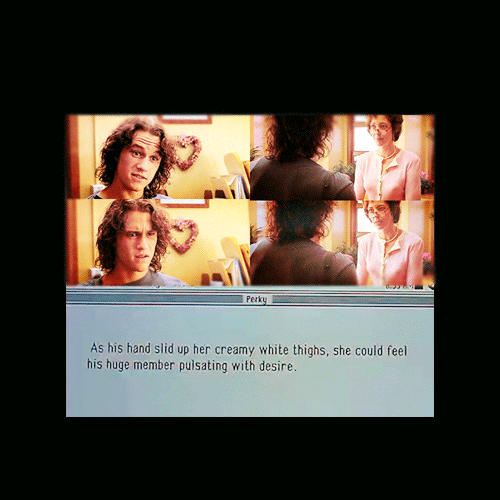
#senorabond writes#senorabond rambles#pedro pascal fanfiction#pedro pascal character fanfic#writing#writing help#writing community#writing resources#smut writers#fanfiction
165 notes
·
View notes
Text

Break these terrible amateur tropes by thinking outside the box.
#writing#writers#writers on tumblr#writing community#writerscommunity#writer things#writerslife#novel writing#writers and readers#writing tips#writing advice#writing help#writing resources#how to write#writing tools#fanfic#fan fiction#fantasy tropes#tropes#writing tropes#writing stuff#on writing#character tropes
357 notes
·
View notes